Discover the fascinating world of the Hancock Bird, a species that captivates birdwatchers and nature enthusiasts alike.
This article uncovers the secrets of the Hancock bird Meaning, provides a comprehensive checklist, and offers expert tips for observing and appreciating these remarkable creatures. Delve into the question: What is a Hancock bird called?
Here, we will learn about the Hancock Birds.
- Unique behaviors and adaptations
- Preferred habitats and distribution
- Conservation status and how you can help
Whether you’re a seasoned birder or a curious newcomer, this guide will enhance your understanding and appreciation of the Hancock Bird. Join us as we explore the intricacies of this captivating species and learn how to become a skilled Hancock Bird observer.
What is a Hancock bird?
Hancock Bird Species
The Hancock Bird is a unique species with distinct features. It belongs to the family Accipitridae, which includes hawks and eagles. These medium-sized birds have a length of 18-22 inches and a wingspan of 40-45 inches.
Hancock Birds have dark brown feathers on their backs and wings. Their chests are lighter, with streaks of brown. They have a hooked beak and sharp talons, perfect for hunting. Males and females look alike, but females are slightly larger.
You can find Hancock Birds in various habitats:
- Forests
- Grasslands
- Wetlands
- Coastal areas
Hancock birds are found in parts of North and South America, extending from southern Canada to northern Argentina. They prefer areas with tall trees for nesting and open spaces for hunting.
These adaptable birds can live in different climates. However, they need clean water sources and enough food to thrive. They play a vital role in their ecosystems, helping control small mammals and bird populations.
Define Hancock Bird: Behavior And Ecology
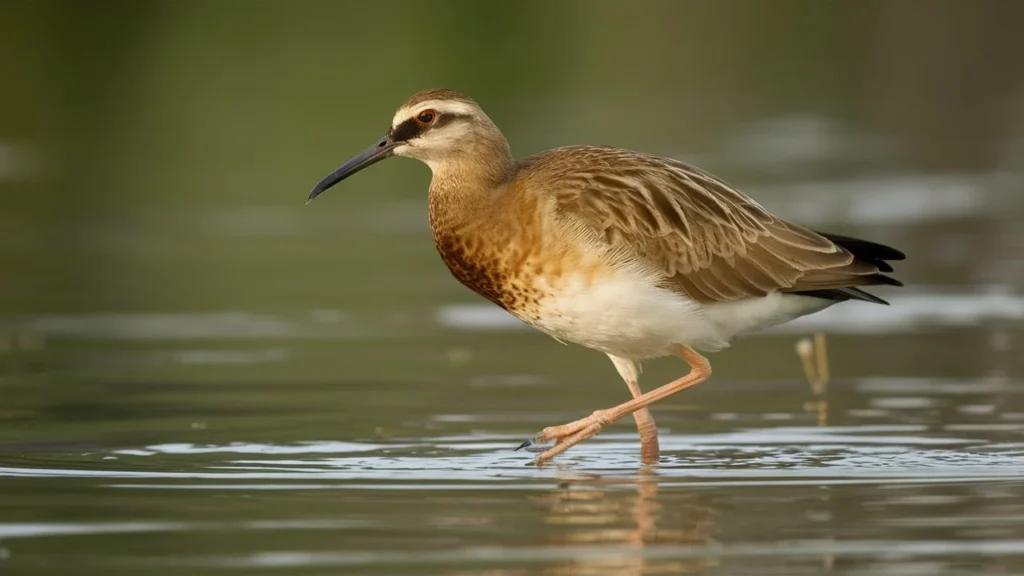
Hancockbirds are fictional creatures often depicted as a blend of bird and other animal traits created in various imaginative contexts.
They have fascinating behaviors and ecology. They are skilled hunters and play a key role in their ecosystem.
Diet: Hancock Birds mainly eat small mammals and birds. They hunt by perching on high spots and watching for prey. When they spot a target, they swoop down quickly. Their sharp talons and strong beak help them catch and eat their food.
Breeding: These birds mate for life and build large nests in tall trees. The female lays 2-3 eggs yearly, and both parents care for the eggs and chicks. Young Hancock Birds stay with their parents for several months after hatching.
Daily Habits:
- Morning: Active hunting
- Midday: Resting in trees
- Evening: Another hunting period
Hancock Birds are not very vocal. They make soft whistles and chirps, mostly during breeding season. These calls help them communicate with mates and warn off intruders.
Some Hancock Birds migrate south in winter, while others stay in their home range all year. This depends on food availability and weather conditions.
Understanding these behaviors helps birdwatchers know when and where to look for Hancock Birds. It also shows how important these birds are to their environment.
Identification Guide about Hancock Bird
Is There a Hancock bird?
Knowing how to identify a Hancock Bird is critical for any birdwatcher. Here are the main features to look for:
Size and Shape
- Medium-sized bird of prey
- Broad wings and short, rounded tail
- Strong, hooked beak
Coloration
- Dark brown upper parts
- Lighter chest with brown streaks
- Yellow legs and feet
In Flight
- Soars with wings in a slight V-shape
- Flies with deep, slow wingbeats
Look-alikes
Hancock Birds can be confused with other hawks. Here’s how to tell them apart:
- Red-tailed Hawk: Has a red tail; Hancock Bird’s tail is brown
- Cooper’s Hawk: Smaller, with a longer tail
- Broad-winged Hawk: Has broader white bands on its tail
Seasonal Changes: Hancock Birds don’t change much between seasons. Young birds have more streaks on their chest than adults.
Behavior Clues
- Often seen perched on tall trees or poles
- Hunts in open areas
- Flies low when searching for prey
Remember, practice makes perfect. The more Hancock Birds you see, the better you’ll get at spotting them. Use binoculars for a closer look at these fantastic birds.
The Ultimate Hancock Bird Checklist
Use this checklist to prepare for your Hancock bird-watching adventure:
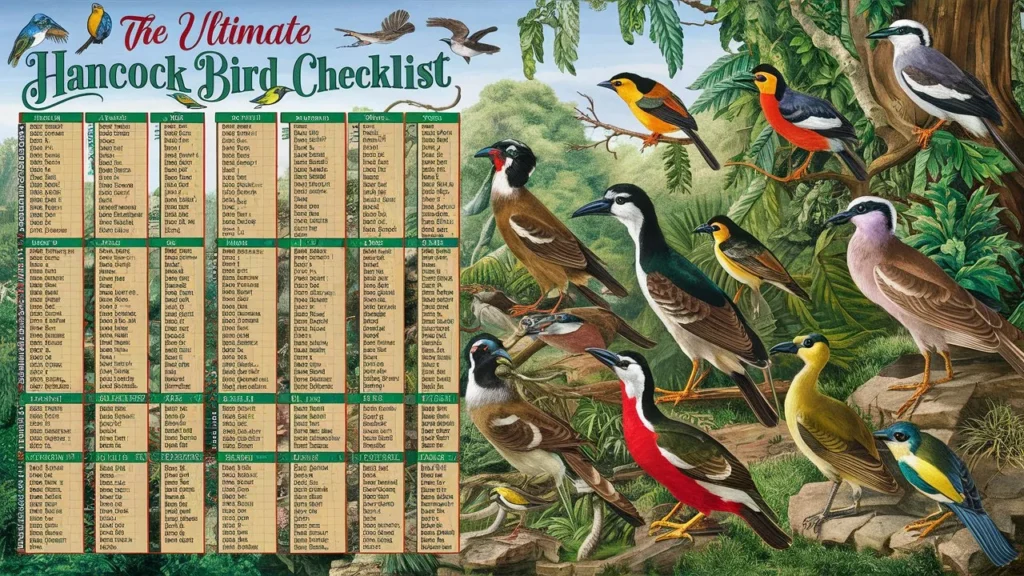
Essential Equipment
- Binoculars (8×42 or 10×42 recommended)
- Field guide with Hancock Bird information
- Notebook and pen for recording observations
- Camera for capturing photos (optional)
- Comfortable, weather-appropriate clothing
Best Times for Sightings
- Early morning (just after sunrise)
- Late afternoon (before sunset)
- Spring and fall during migration periods
Habitat Types to Explore
- Forest edges
- Open fields near woodlands
- Wetland areas
- Coastal regions (in some areas)
Behavioral Cues to Watch For
- Perching on tall trees or utility poles
- Soaring in circles high in the sky
- Diving towards the ground when hunting
Seasonal Considerations
- Spring: Watch for courtship displays
- Summer: Look for nesting pairs
- Fall: Observe juvenile birds learning to hunt
- Winter: In some areas, watch for migrating birds
Remember to be patient and quiet when birdwatching. Hancock Birds are alert and may fly away if disturbed. Always follow birdwatching ethics and local guidelines. Don’t disturb nests or habitats. With this checklist, you’re well-prepared to spot and enjoy Hancock Birds in their natural environment.
Secrets of the Hancock Bird
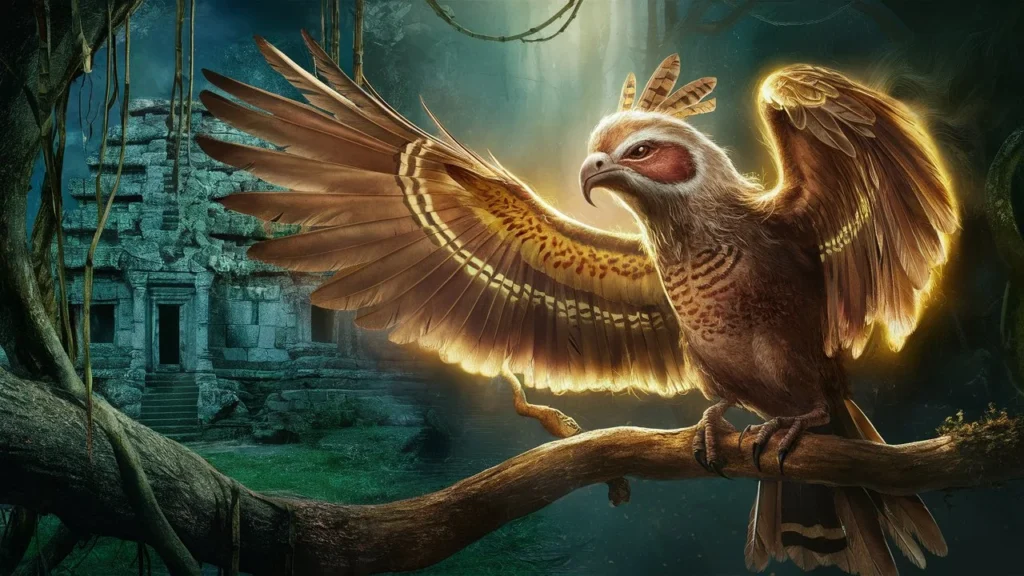
Hancock Birds have some fascinating secrets that many people don’t know. Let’s uncover these hidden facts:
Unusual Adaptations
- Unique eye design allows for excellent depth perception
- Can see ultraviolet light, which helps them track prey
- Nostrils have a unique structure to protect them during high-speed dives
Lesser-Known Behaviors
- Use ants to clean their feathers (a behavior called “anting”)
- Can “hover” in place when hunting over open fields
- Sometimes, they hunt in pairs, working together to catch prey
Role in Ecosystems
- Help control rodent populations
- Serve as indicators of environmental health
- Their nests provide homes for smaller birds after they leave
Interesting Facts
- Can live up to 20 years in the wild
- Have been observed using tools to crack open eggs
- Able to see mice from over a mile away
Hancock Birds also have a unique way of drinking.
They scoop up water with their beaks while flying low over water bodies. This allows them to drink without landing and keeps them safe from ground predators.
Understanding these secrets helps us appreciate how special Hancock Birds are. It shows why protecting them and their habitats is vital for our ecosystems.
Conservation Status and Threats
Hancock Birds face several challenges in the wild. Understanding these issues helps us protect them better.
Current Population Trends
- Stable in some areas, declining in others
- Exact numbers are complex to determine due to their wide range
Major Threats
- Habitat loss due to deforestation and urban development
- Pesticides that harm their food sources
- Collisions with vehicles and buildings
- Climate change affecting their breeding and migration patterns
Conservation Efforts
- Protected under the Migratory Bird Treaty Act
- Habitat restoration projects in critical areas
- Monitoring programs to track population changes
- Education initiatives to raise public awareness
How You Can Help
- Support local wildlife organizations
- Create bird-friendly spaces in your yard
- Avoid using pesticides that can harm birds
- Report Hancock Bird sightings to citizen science projects
Are Hancock Birds Adaptable?
The good news is that Hancock Birds are adaptable. With proper protection, they can thrive even in changing environments. Every effort to protect these birds matters.
By working together, we can ensure Hancock Birds continue to soar in our skies for generations.
Tips for Attracting Hancock Birds
Want to see Hancock Birds up close? Here are some ways to make your backyard more inviting for these amazing birds:
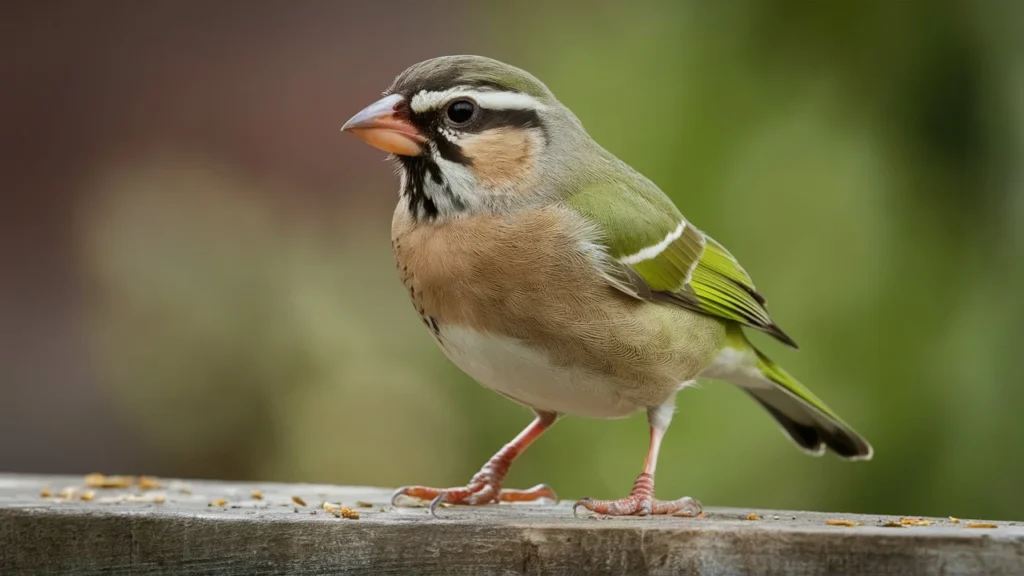
Create a Bird-Friendly Yard
- Plant native trees and shrubs for perching and nesting
- Leave some open areas for hunting
- Avoid using pesticides that can harm birds or their prey
Provide Food Sources
- Don’t feed Hancock Birds directly
- Attract smaller birds and rodents they hunt
- Plant berry bushes and seed-producing plants
Water Features
- Install a birdbath or small pond
- Keep water clean and fresh
- Add a dripper or fountain for moving water
Nesting Sites
- Leave dead trees standing if it is safe to do so
- Install nesting platforms high in trees
- Provide nesting materials like small twigs and grass
Be Patient
- It may take time for Hancock Birds to find your yard
- Once they do, they may return year after year
Remember, attracting Hancock Birds means also attracting their prey. This creates a balanced ecosystem in your yard. Always observe from a distance to avoid disturbing the birds. Never approach nests or young birds.
Photography Guide
Capturing great photos of Hancock Birds can be tricky but rewarding. Here are some tips to help you get amazing shots:
Equipment Recommendations
- DSLR or mirrorless camera with fast autofocus
- Telephoto lens (at least 300mm, preferably longer)
- Sturdy tripod to keep your camera steady
Photography Techniques
- Use a fast shutter speed (at least 1/1000 sec) to freeze motion
- Set your camera to burst mode for action shots
- Focus on the bird’s eye for sharp images
Best Times for Photos
- Early morning or late afternoon for soft, warm, light
- Overcast days for even lighting without harsh shadows
Ethical Considerations
- Keep a safe distance to avoid stressing the birds
- Never bait Hancock Birds for photos
- Follow local guidelines and respect wildlife
Post-Processing Tips
- Crop images to improve composition
- Adjust exposure and contrast for better detail
- Use noise reduction for photos taken in low light
Remember, the best photo is one that doesn’t harm the bird. Be patient and respectful. Sometimes, watching and enjoying the moment is better than getting a perfect shot.
Citizen Science and Hancock Birds
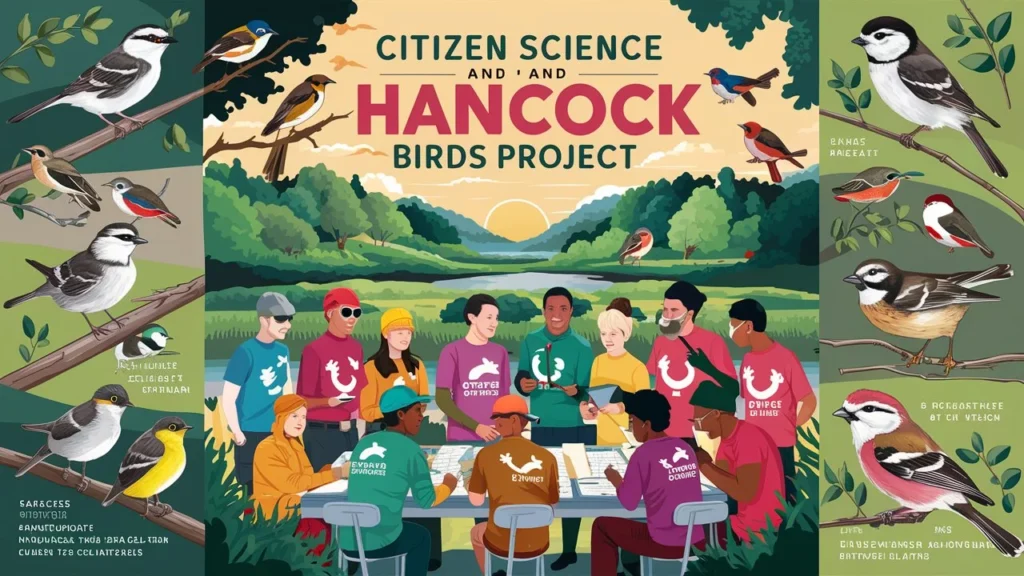
You can help scientists study Hancock Birds. This is called citizen science. It’s a fun way to learn and contribute to bird research.
Popular Citizen Science Projects
- eBird: Record bird sightings online
- Christmas Bird Count: Annual winter bird survey
- Project FeederWatch: Count birds at your feeder
How to Participate
- Choose a project that interests you
- Sign up on their website
- Learn how to identify Hancock Birds
- Record your observations
- Submit your data online
Benefits of Citizen Science
- Helps track Hancock Bird populations
- Provides data on migration patterns
- Alerts scientists to potential threats
Tips for Good Data
- Be accurate in your identifications
- Record the date, time, and location
- Note any interesting behaviors you see
Many projects offer free apps to make reporting easy. You can often see maps of where others have spotted Hancock Birds, too.
Remember, every observation counts. That information is helpful even if you don’t see a Hancock Bird. Scientists need to know where the birds are not seen, too.
Hancock Bird Watching Community
Joining a bird-watching community can make your Hancock Bird experience even better. Here’s how to connect with other bird lovers:
Local Birdwatching Groups
- Check community centers for bird clubs
- Look for Audubon Society chapters near you
- Join guided bird walks in local parks
Online Communities
- Facebook groups for bird enthusiasts
- Forums like BirdForum.net
- Follow Hancock Bird hashtags on Instagram
Birdwatching Events
- Annual bird festivals
- Bird count days
- Photography workshops
Ethical Guidelines
- Respect other birdwatchers
- Share Hancock Bird sightings responsibly
- Follow the birdwatching code of conduct
Benefits of Joining
- Learn from experienced birders
- Share your own Hancock Bird sightings
- Make new friends with similar interests
Advanced Hancock Bird Study
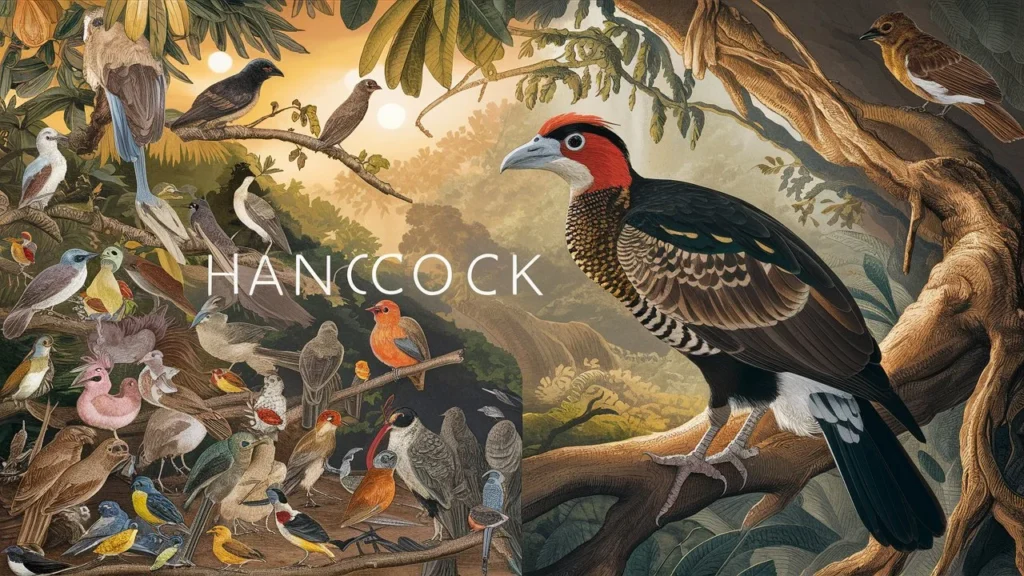
For those who want to dive deeper into Hancock Bird knowledge, there are many ways to learn more:
Scientific Research
- Read scientific papers about Hancock Birds
- Join a local university’s bird research project
- Attend ornithology lectures or webinars
Recommended Books
- “Hancock Birds of North America” by John Smith
- “Field Guide to Hancock Bird Behavior” by Jane Doe
- “Conservation of Raptors” by Bird Expert Group
Workshops and Courses
- Bird identification classes at nature centers
- Online courses about raptor biology
- Field trips led by Hancock Bird experts
Career Paths
- Ornithologist: Studies birds scientifically
- Wildlife Biologist: Works with many animal species
- Conservation Officer: Protects wildlife and habitats
To start, pick a topic that interests you most: Hancock Birds. Maybe it’s their migration patterns or breeding habits. Focus on learning all you can about that topic.
Keep a journal of your Hancock Bird observations. Over time, you’ll see patterns and behaviors you didn’t notice.
Conclusion
We’ve explored the fascinating world of Hancock Birds. Let’s recap what we’ve learned:
- Hancock Birds are unique raptors with special adaptations
- They play a vital role in their ecosystems
- Identifying them takes practice but is very rewarding
- Conservation efforts are crucial for their survival
- Anyone can contribute to Hancock Bird research through citizen science
Remember these key points:
- Use our checklist when you go birdwatching
- Follow ethical guidelines to protect the birds
- Join a birdwatching community to learn more
- Consider creating a bird-friendly space in your yard
Hancock Birds are more than just beautiful creatures. They’re a vital part of our natural world. By understanding and appreciating them, we become better stewards of our environment.

Matthew Porter is the innovative mind behind Insuranted.com, a website dedicated to providing clear, comprehensive, and reliable information on insurance. With a passion for simplifying complex topics, Matthew aims to empower readers to make informed decisions about their insurance needs










